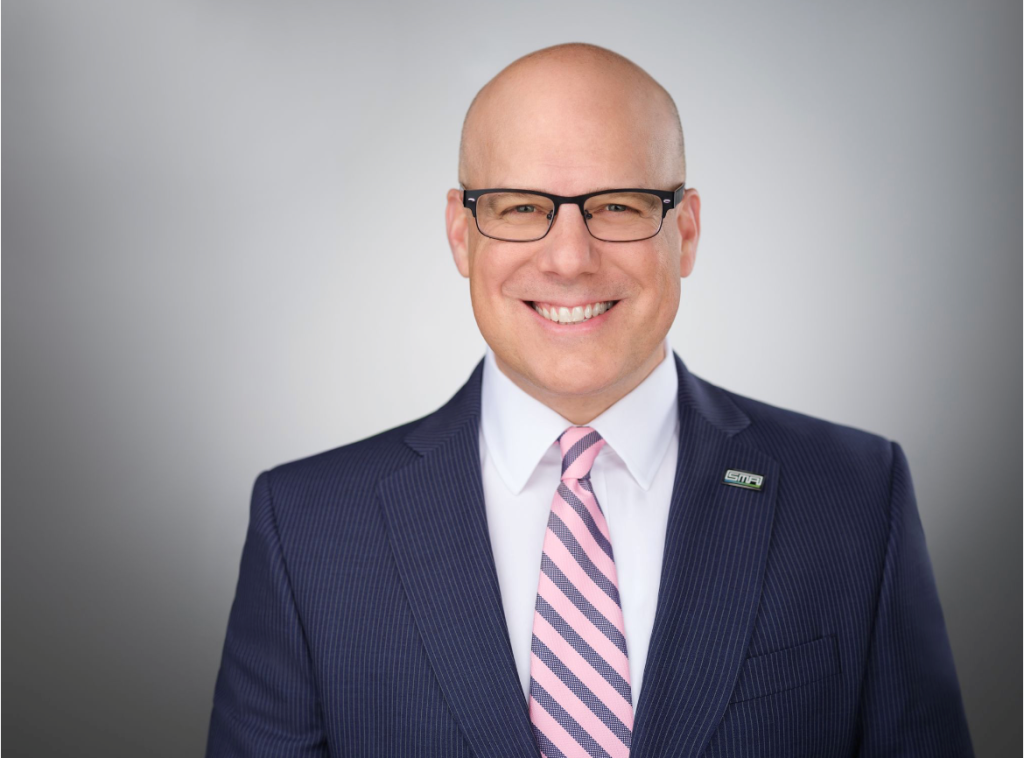SMU Community Spotlight

SMU Spotlight: SMA's Gregg Walker connects the outside world with the steel industry
Written by Becca Moczygemba
January 8, 2024
When significant events happen in the world of steel, many media outlets turn to the experts for insight.
Associations like the Steel Manufacturers Association (SMA) are advocates for the steel industry and communicate with the outside world. SMA’s director of communications and media relations, Gregg Walker, shared his expertise with SMU.
Below is a lightly edited version of the interview

Steel Market Update: You work for the Steel Manufacturers Association (SMA). What does the SMA do?
Gregg Walker: SMA is the largest trade association in North America, serving the steel industry. That is in terms of the number of member companies, and also in terms of the steel capacity production. We currently have 24 members, from the largest steel company in the US to members who operate just one facility. It’s great working with that range of member companies.
SMU: What does a trade association do exactly?
GW: Trade associations are organizations of like-minded people, and in our case like-minded companies. They operate on behalf of their members for things the members can’t easily do individually. At SMA we offer a kind of government relations that many of our member companies couldn’t really bring to bear with their own resources. But, by pooling their resources, they raise their profile and amplify their messages. It’s strength in numbers.
SMU: That sounds like a pretty good deal.
GW: Members also turn to associations like SMA for other kinds of support. For example, we have five committees: safety, environmental, transportation and materials handling, human resources, and occupational health. They’re among our most popular resources. The committees bring together experts in each of those disciplines to find ways to get better at what they do every day, whether it’s keeping workers safe on the job or moving steel from one place to another safely and efficiently.
SMU: So, what’s different about the steel industry compared to other industries that you’ve worked in?
GW: Well, I’ve been fortunate to work for industries where people are committed to making a good living for themselves, their employees, and their communities, while also pursuing larger aims. You know, the membership at SMA inspires me because they are doing what the steel industry need to do. They produce the steel that becomes our cars, appliances, bridges, roads, and buildings. But at the same time, they’re dedicated to finding ways to reduce their emissions. That’s part of what drew me to SMA; it’s inspiring.
SMU: You’ve been with SMA for a year now. What’s something you’ve learned about the steel industry that’s been surprising?
GW: Well, before I met Phil at SMA, I didn’t know that there are two primary ways to make steel. The old-fashioned way of steelmaking is such a big contributor to greenhouse-gas emissions. But learning about the low-emissions way that our members make steel, by melting scrap in electric-arc furnaces, was an eye opener. The hospitality of the steel industry is exceptional.
SMU: What exactly does the director of communications and media relations at SMA do?
GW: It involves staying on top of the ways that we talk to the wider world about what we do and what our members need to know. So social media, the website, and annual report, but most importantly, cultivating relationships with folks in the media. I make sure I understand what they need from me to do their jobs. They’ve got stories to tell, and I try to find out how I can help them there. Then also, to make sure they understand where we’re coming from. It’s more about giving them a little bit of education about the steel industry, about our association, and about our member companies. That way they’re well informed when they need to write something.
SMU: What are the biggest challenges of what you do?
GW: The biggest challenge is ensuring that the media gets the story right. Reporters have a tough job, and they seldom have enough time to master the details of important news about the steel industry. My job is to help them get what they need in time to meet their deadline while also getting the facts straight and helping their audience understand the important work that SMA members do. It matters to policy-makers, steel customers, maybe even the general public, but might not get the attention it deserves.
SMU: What does 2024 hold for SMA?
GW: I think 2024 will be a year of growth for SMA. I think our strategic plan is very ambitious and very exciting! It promises some good things. We’re definitely going to increase our level of service to our members, increase the kind of resources we make available, and increase our profile.

Becca Moczygemba
Read more from Becca MoczygembaLatest in SMU Community Spotlight

JSW USA CEO Simon sees ‘exciting times’ in steel amid tariff volatility
SMU interviews JSW USA CEO Robert Simon.

SMU Spotlight: CRU’s Paul Butterworth talks EAFs, CBAM, and decarbonization
Last month I traveled to Sweden to the CRU Steel Decarbonisation Summit in Stockholm. I wanted to see if the European take on decarbonization was broadly different from what we are talking about here in the US.

Exclusive: SMU talks the evolution of Reibus with new CEO Jared Rowe
Reibus International Inc. is a growing and maturing company, finding its way in the world of steel. Like any youngster, it is moving through growing pains and pushing through to reach new heights. After rapid growth in its infancy, six-year-old Reibus is now naturally transitioning from being a founder-led company to a management-led one, according to its new leader, Jared Rowe.

SMU Spotlight: Tabitha Stine talks Nucor’s path to a sustainable future
Across industries and nations, it’s clear sustainability is the path towards the future. Moving ahead means creating dialogue and building bridges. For Nucor, building bridges means reaching out to new audiences. Actually, it also literally means soon building bridges from the plate made at its Brandenburg mill in Kentucky.
SMU Spotlight: Randy Knibbe details PADNOS’ growth in US scrap industry
The capacity for EAF steelmaking is growing both in the US and abroad. Ferrous scrap supply has never been more important. A lot of people have viewed the scrap industry as old-fashioned and resistant to change. However, the same forces affecting the steel and other industries are also at play in recycling.
